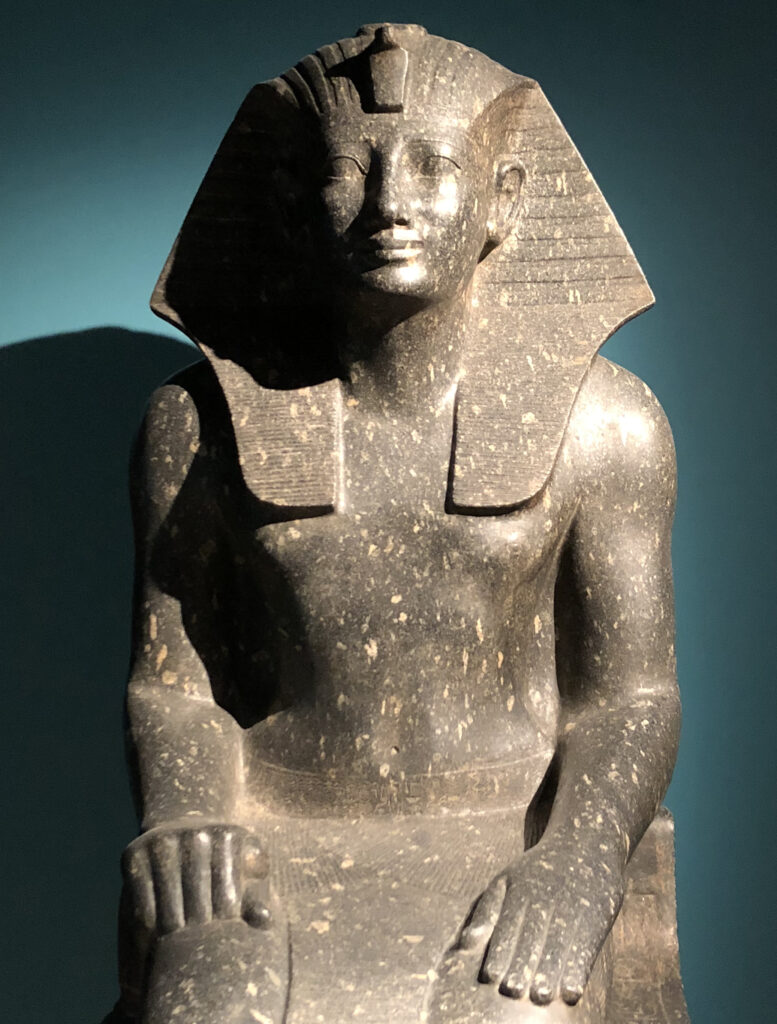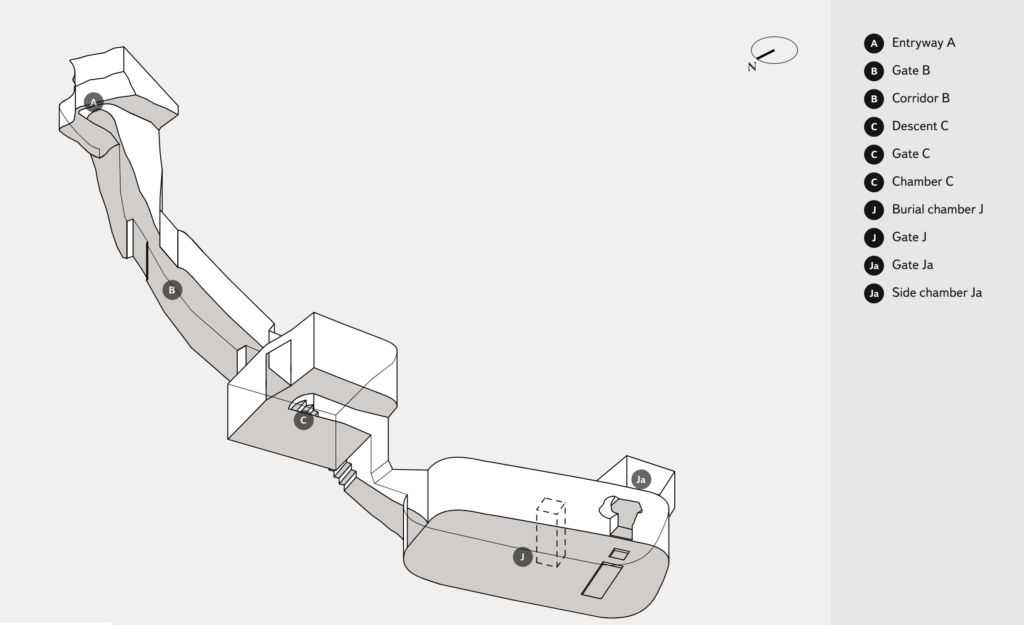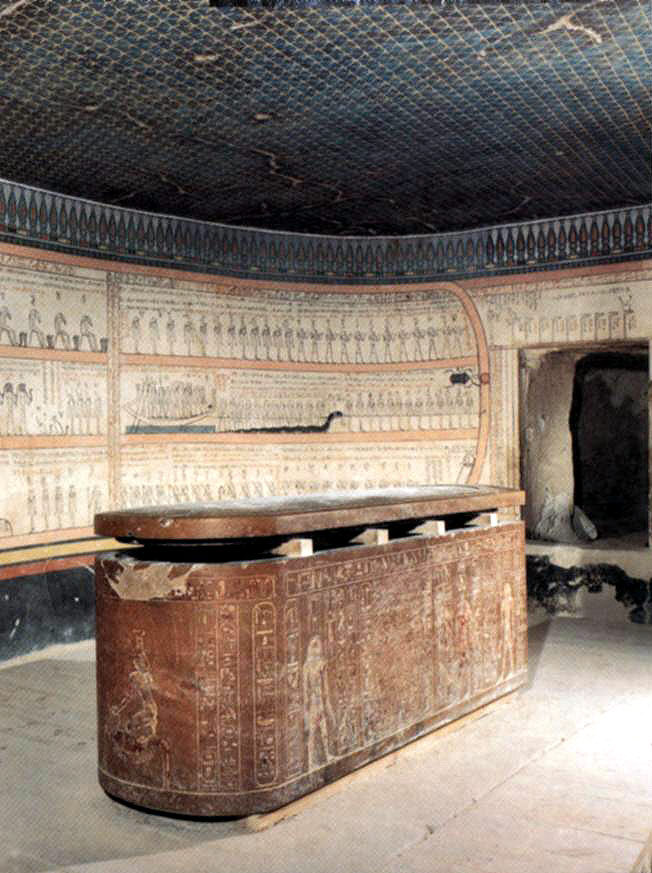Recent Discovery of Pharaoh Thutmose I’s Original Tomb
In the past few months, archaeologists announced the discovery of the original tomb of Pharaoh Thutmose I (also spelled Tutmosis I) in the Valley of the Kings, Egypt. Although his mummy was found more than a century ago, the actual primary tomb remained unknown until recently. This significant find has brought new insights for scholars of Theology and Biblical Archaeology, as it raises the possibility of connections between Thutmose I and events associated with the Exodus narrative in the Bible.
In this article, we present a historical overview of this era, examine how the Egyptians buried their rulers, explain why Thutmose I’s tomb is so significant, and explore how this discovery may prompt new hypotheses regarding the biblical context of the Exodus. You will also find academic references that underpin these findings and reflections.
This content was organized based on material produced by Dr. Rodrigo Silva.
1. Historical Context: Archaeology of Dynasties and Burials in Egypt
1.1. From Mastabas to Pyramids
In the early eras of Pharaonic Egypt, nobles and kings were buried in structures called mastabas—rectangular buildings with underground chambers and dedicated offering spaces. Later, during the Third Dynasty (around 2,600 BC), the architect Imhotep revolutionized these constructions by turning them into step pyramids, with the one at Saqqara being the oldest known. During the Fourth Dynasty (around 2,500 BC), the famous Great Pyramids of Giza (Khufu, Khafre, and Menkaure) were constructed.
1.2. The Valley of the Kings and the 18th Dynasty
Over time, these large monuments drew the attention of tomb robbers. In an effort to prevent looting and preserve treasures, beginning mainly in the 18th Dynasty (around 1,550 BC), pharaohs started to be buried more discreetly, in hidden tombs in the Valley of the Kings near ancient Thebes (modern Luxor). It was there that the famous tomb of Pharaoh Tutankhamun was discovered in 1922, practically intact and filled with treasures.

(Panoramic view of the Valley of the Kings, looking north. By Nikola Smolenski – This photo was created with Hugin., CC BY-SA 3.0 rs.)
1.3. Who Was Thutmose I
Thutmose I (also spelled Tutmosis I) is part of this 18th Dynasty and preceded rulers such as Thutmose II, Hatshepsut, and Thutmose III. Until now, archaeologists had found his mummy but not his original burial place. In 2022, the first indications of the tomb surfaced, and only recently was the cleanup and study of the site concluded. This newly found tomb was therefore the “primary” resting place of the pharaoh, although his mummy was relocated in antiquity, likely to protect it from looting or due to deterioration of the original tomb.

(Pharaonic Statue of Thutmose I. Source: By Maksim Sokolov (maxergon.com) – Own work, CC BY-SA 4.0.)
2. The Recent Archaeological Discovery and Its Implications
2.1. Excavations in the Valley of the Kings
A team led by Professor Liot Land (New Kingdom Research Foundation) identified the entrance to an underground staircase. Amid debris and ceramic fragments, they found cartouches bearing the name of Thutmose I. These “cartouches” (oval or rectangular representations that encircle the royal name) confirm the individual buried there was of royal status.

(Debris in the staircase leading to the tomb’s entrance. Source: The Ban Mapping Project.)

(Cartouche with the royal name of Thutmose I. Source: The Ban Mapping Project.)
2.2. Tomb Structure
After carefully removing debris accumulated over centuries, archaeologists discovered that the tomb contained damaged paintings depicting starry-sky motifs and references to ancient Egyptian funerary texts. Small fragments of blue-toned plaster and pieces of pottery bearing the cartouche of Thutmose I confirmed that this was indeed the original tomb of this king.

(Structure of Thutmose I’s Tomb. Source: The Ban Mapping Project.)
2.3. Hypothesis of the Mummy’s Removal
Although the mummy of Thutmose I was found in the late 19th century in another burial chamber, the most accepted current hypothesis is that, during the pharaonic era, priests or government officials moved the king’s mummy elsewhere to protect it from looters or from water infiltration. This phenomenon of “mummy relocation” has been observed with other pharaohs, including Hatshepsut.
3. Possible Connections Between Archaeology and the Holy Bible
3.1. Pharaoh of the Exodus
Movies, TV series, and animations have popularized the idea that the pharaoh of the biblical Exodus was Ramesses II. However, researchers like Egyptologist and biblical scholar James K. Hoffmeier (in Israel in Egypt: The Evidence for the Authenticity of the Exodus Tradition) and historian Kenneth A. Kitchen (in On the Reliability of the Old Testament) argue for earlier dates for the Exodus, placing it around 1450–1440 BC. In this time frame, the pharaoh involved could not have been Ramesses (who ruled around 1279 to 1213 BC). As a result, many scholars point toward the royal line that includes Thutmose II and, especially, Thutmose III as the potential “Pharaoh of the Exodus.”
3.2. Why Is Thutmose I Important?
The recent discovery is particularly significant among biblical studies circles because Thutmose I is believed to have been the father of Thutmose II and the grandfather of Thutmose III. If the chronology placing the Exodus in the mid-15th century BC is correct, then Thutmose II or Thutmose III could have been the pharaoh who confronted Moses. Some even suggest that Hatshepsut (daughter of Thutmose I and sister-wife of Thutmose II) was the “princess” who adopted Moses on the banks of the Nile. Thutmose I’s tomb sheds light on research into the 18th Dynasty’s family relationships and how this period might align with biblical accounts.
3.3. Intriguing Details
Some funerary texts linked to Thutmose III (son of Thutmose II) depict soldiers drowning, which has led to speculation about a possible connection with the biblical crossing of the Red Sea (Exodus 14). Although this is not definitive proof, these records present intriguing points of convergence for dialogue between archaeology and the Bible.

(Tomb of Thutmose III. Public domain image.)
4. Theological and Archaeological Implications
- Historical Validation: While the Christian faith does not rely solely on archaeological confirmations, each new discovery can provide historical and cultural context that enriches our understanding of biblical narratives.
- Dynastic Chronologies: The appearance of names like “Thutmose” (in Egyptian, “Tuthmose” or “Tutmosis,” meaning “born of Thoth”) and the root “Mose” evokes possible etymological parallels with Moses (in Hebrew, “Moshe”), reinforcing debates about linguistic origins and adaptations during that period.
- Cultural Integration: Egypt is mentioned in the Bible from Genesis to Deuteronomy, serving as the backdrop for the Hebrews’ saga. Through the discovery of tombs, mummies, and funerary inscriptions, we can better understand the rituals and customs that provide the historical setting for figures like Joseph, Moses, and even later prophecies.
5. Conclusion
The recently uncovered tomb of Thutmose I offers an unprecedented opportunity to revisit debates about the precise timing of the Exodus and the complex succession of 18th Dynasty pharaohs. While ongoing research may yield more insights—and no single archaeological find can definitively settle a debate of such vast historical and theological scope—this breakthrough undoubtedly shines additional light on the realm of Egyptology and the setting in which the biblical accounts of Genesis and Exodus took place.
For those studying Theology and Biblical Archaeology, the prospect of finding connections between material discoveries (inscriptions, buildings, and burial objects) and written narratives (such as those in the Bible) is always invigorating. Every fragment unearthed in the Egyptian desert helps reconstruct a historical context that, for so many centuries, has shaped the faith of millions around the world.
References and Suggested Sources
- KITCHEN, K. A. On the Reliability of the Old Testament. Grand Rapids: Eerdmans, 2003.
- HOFFMEIER, J. K. Israel in Egypt: The Evidence for the Authenticity of the Exodus Tradition. Oxford: Oxford University Press, 1999.
- ALBRIGHT, W. F. From the Stone Age to Christianity. Baltimore: Johns Hopkins University Press, 1940 (multiple later reprints).
- Holy Bible (study versions with historical introductions and archaeological notes, such as the Archaeological Study Bible).
- Official Archaeological Reports of the New Kingdom Research Foundation (responsible for discovering the tomb of Thutmose I).
- Permanent Exhibition at the Egyptian Museum in Cairo, where the mummy of Thutmose I is housed.
Note: Research is still in progress, and new scientific papers are expected to be published as the examination of Thutmose I’s tomb advances. It is crucial to follow scholarly journals in Egyptology and attend respected forums on Biblical Archaeology to stay updated on further discoveries and discussions.
Watch the full content from Dr. Rodrigo Silva in the linked video (original source).


1 thought on “Discovering Pharaoh Thutmose I’s Original Tomb in the Valley of the Kings: Implications for Biblical Archaeology and the Exodus”